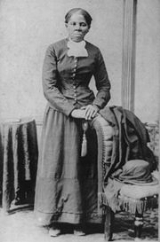
Female Slavery
Encyclopedia

United States
The United States of America is a federal constitutional republic comprising fifty states and a federal district...
were women. As field slaves, women worked mostly to produce crop
Crop
Crop may refer to:* Crop, a plant grown and harvested for agricultural use* Crop , part of the alimentary tract of some animals* Crop , a modified whip used in horseback riding or disciplining humans...
s such as cotton
Cotton
Cotton is a soft, fluffy staple fiber that grows in a boll, or protective capsule, around the seeds of cotton plants of the genus Gossypium. The fiber is almost pure cellulose. The botanical purpose of cotton fiber is to aid in seed dispersal....
and tobacco
Tobacco
Tobacco is an agricultural product processed from the leaves of plants in the genus Nicotiana. It can be consumed, used as a pesticide and, in the form of nicotine tartrate, used in some medicines...
.
During a time period when women were considered inferior, as were blacks, imagine what it was like to be a black woman in the south during this period. Not only are they slaves and subject to the many horrors that come along with being in bondage, but they are also women, and subject to the cruelties of men who look down on women as inferior simply because of their sex. Is she can somehow find a way out of the black stereotype she finds herself drowning in the stereotypical view of women, and vice-versa.
As houseslaves women were domestic servants cooking and raising the children. Later on they were used in many factories because they could work at lower maintenance costs, instrumental in the development of the United States. Because of forced labor, they had very little time to tend to their own families.
Some of the masters of female slaves were unsure of how to treat them. This point is clearly illustrated in Bethany Veney
Bethany Veney
Bethany Johnson Veney is best remembered in historical studies for her autobiography, Aunt Betty’s Story: The Narrative of Bethany Veney, A Slave Woman .-Significance of Aunt Betty's Story:...
’s autobiography, Aunt Betty’s Story: The Narrative of Bethany Veney, A Slave Woman.http://docsouth.unc.edu/fpn/veney/veney.html In it she describes a widow by the name of “Miss Lucy”, who hated slavery but didn’t know what to do except be kind to Bethany. On one occasion she even attempted to get a man to take her back north with him so she could be free. She even said that she would grant her freedom one day if she remained content and didn’t marry.
Many female slaves were the object of severe sexual exploitation
Sexual exploitation
Sexual exploitation may refer to:*Sexual slavery*Sexual exploitation and abuse in humanitarian response...
; oftentimes fathering the children of their white masters. Black women were prohibited from defending themselves against any type of abuse, including sexual, at the hands of white men. If a slave attempted to defend herself she was often subjected to further beatings from either the master or even the mistress.http://academic.udayton.edu/race/05intersection/Gender/rape.htm The black female, Woman or child, was forced into sexual relationships for the white slave master’s pleasure and profit; attempting to keep the slave population growing by his own doing, and not by importing more slaves from Africa. Even Thomas Jefferson, President of the United States, is believed to have fathered several children with one of his female slaves, Sally Hemings
Sally Hemings
Sarah "Sally" Hemings was a mixed-race slave owned by President Thomas Jefferson through inheritance from his wife. She was the half-sister of Jefferson's wife, Martha Wayles Skelton Jefferson by their father John Wayles...
. In the case of Harriet Ann Jacobs
Harriet Ann Jacobs
Harriet Ann Jacobs was an American writer, who escaped from slavery and became an abolitionist speaker and reformer...
, author of Incidents in the Life of a Slave Girl
Incidents in the Life of a Slave Girl
Incidents in the Life of a Slave Girl is a book that was published in 1861 by Harriet Jacobs, using the pen name "Linda Brent". While on one level it chronicles the experiences of Harriet Jacobs as a slave, and the various humiliations she had to endure in that unhappy state, it also deals with...
, her master, Dr. James Norcom, had sexually harassed her for years. Even after she had two children of her own he threatened to sell them if she denied his sexual advances.
Some slave women even intentionally made themselves available to their white masters, if for no other reason than to ease the burdens of chattel slavery. Many white women despised the interracial relationships that their husbands held with their slaves, but were too ashamed to admit any wrong doing on the part of their husbands. As Mary Chestnut claims, “any lady is ready to tell who is the father of all the mulatto children in everybody’s household but their own. Those she seems to think, drop from the clouds.” There are some cases of a three-sided relationship leading to confrontations and even ending marriages. Most white women who found out about their husbands unfaithfulness with his slaves took out their anger, not on their husbands but on the object of his affair; the Black female slave. http://books.google.com/books?id=Y_9wMEIIBq0C&pg=PA41&dq=ain%27t+i+a+woman+deborah+gray+white&ei=RMcGS_3SG4qwNNOK1NkP#v=onepage&q=&f=false
Black women as a result were also involved in the struggle to overturn slavery. Women such as Harriet Tubman and Sojourner Truth
Sojourner Truth
Sojourner Truth was the self-given name, from 1843 onward, of Isabella Baumfree, an African-American abolitionist and women's rights activist. Truth was born into slavery in Swartekill, New York, but escaped with her infant daughter to freedom in 1826. After going to court to recover her son, she...
are prime examples of such women. Black women were also very active in the struggle against the oppression of women.

